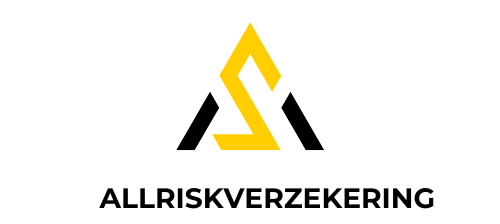In the realm of competitive sports, the proper training of athletes is crucial to their performance. It’s not just about the time they spend in the pool or on the track, but also the quality and intensity of their training sessions. And in the case of elite junior swimmers, the task can be even more demanding. The question then arises: what is the most effective way to monitor and manage their training load to ensure optimal performance without risking injury? This article will delve into this topic, exploring the best approaches suggested by sports science and medicine.
Understanding Training Load
What exactly does the term ‘training load’ mean? In simple terms, it refers to the volume and intensity of an athlete’s training over time. This includes both the physical loads (e.g. weight lifted, distance covered, etc.) and the physiological loads (e.g. heart rate, oxygen consumption, etc.). It’s crucial to monitor these loads to prevent overtraining, which can lead to decreased performance and increased risk of injury.
Have you seen this : What Is the Role of Technology in Personalized Hydration Strategies for Marathon Runners?
There are two key types of training load: external and internal. External load refers to the work completed by the athlete, independent of their internal characteristics (e.g. weight lifted). Internal load, on the other hand, considers the athlete’s physiological and psychological responses to this external load (e.g. heart rate, perceived exertion).
The Role of Sports Science in Monitoring Training Load
Sports science, or ‘sport sci’, plays a crucial role in monitoring training load. Researchers in this field utilise numerous methods and tools to measure and analyse various aspects of an athletes’ training. They use scientific knowledge to devise training programmes that maximise performance and minimise injury risks.
Also to read : What’s the Effect of Plant-Based Diets on Strength and Recovery in Bodybuilding?
One effective method for monitoring training load is the use of wearable tech. Devices like heart rate monitors, GPS trackers, and accelerometers provide a wealth of data about an athlete’s performance, including metrics like distance covered, speed, and effort level. High-tech solutions like Google’s sports analytics platforms can then process this data, using algorithms to provide actionable insights for coaches and athletes.
For instance, they can detect patterns that suggest an athlete is overtraining, allowing the athlete or coach to adjust their programme before it leads to injury.
Incorporating Strength Training and Load Management
Strength training is an essential component of an athlete’s training regime. It enhances performance by increasing muscle power and endurance, and it also plays a crucial role in injury prevention. However, like any other form of training, it’s important to monitor and manage the load to avoid overexertion and injury.
Studies cited in PubMed and CrossRef have shown that a well-structured strength training programme can significantly improve the performance of swimmers. However, it’s crucial to balance this with adequate rest and recovery time.
Load management refers to the process of adjusting an athlete’s training load to optimise their performance and prevent overtraining. This requires ongoing monitoring and adjustment based on the athlete’s response to their training programme.
The Role of Sports Medicine in Preventing Injuries
In the world of elite sports, injuries can be a significant setback. That’s where sports medicine, or ‘sport med’, comes in. Sports medicine professionals play a key role in preventing and treating injuries among athletes.
They can collaborate with coaches and athletes to design and implement training programmes that take into account individual athletes’ characteristics and needs. They can also provide guidance on recovery strategies, such as nutrition and sleep, which can often be overlooked but are vital in maintaining an athlete’s health and performance.
In the context of monitoring training load, sports medicine professionals can help interpret the data provided by sport sci researchers and wearable tech. They can use this information to identify potential injury risks and to advise on adjustments to the athlete’s training regime.
Conclusion: A Multidisciplinary Approach is Key
In conclusion, monitoring training load in elite junior swimmers requires a multidisciplinary approach. It involves not just the athlete and their coach, but also sports science researchers and sports medicine professionals. Together, they can ensure that the athlete’s training programme is pushing them to their limits, without pushing them over the edge.
The Integration of Advanced Technology and Subjective Measures in Training Load Monitoring
The integration of science and technology in sports has revolutionised the way we monitor and manage training load. Advanced tools like wearable tech and athlete monitoring systems offer a wealth of data that can provide insights into an athlete’s performance. For instance, heart rate monitors, GPS trackers, and accelerometers can track metrics like distance covered, speed, and effort level. These devices provide real-time data and allow for continuous monitoring of the athlete’s external and internal load.
However, one must not disregard the importance of subjective measures in monitoring training load. This includes factors such as perceived exertion and mood state, which although intangible, can be indicators of overtraining or fatigue. Tools such as the session RPE (Rate of Perceived Exertion) can be used to understand the athlete’s internal load better. The session RPE is a simple yet effective tool in which the athlete rates their overall exertion post-training on a scale. According to studies listed in Google Scholar, there is a strong correlation between athletes’ RPE scores and physiological measures of training load.
A smart integration of such objective and subjective measures can provide a comprehensive picture of the athlete’s training load. For instance, Google’s sports analytics platforms can process data from wearable tech and subjective measures, using algorithms to provide actionable insights for coaches and athletes. The result – a well-managed training load that enhances performance while minimising injury risk.
Strength and Conditioning Research in Swimming
With the rise of strength cond (Strength and Conditioning) research in swimming, it’s clear that strength training plays an essential role in a swimmer’s performance. It enhances muscle power and endurance, and when managed correctly, can prevent injuries. According to studies listed in PubMed CrossRef and Google Scholar, strength training, when combined with proper load management, can significantly improve a swimmer’s performance.
Load management, in this context, means adjusting the athlete’s training load to optimise performance and prevent overtraining. It isn’t a one-size-fits-all approach. Each athlete’s response to their training programme can be different, making ongoing monitoring and adjustment crucial.
Sports physiol (Sports Physiology) plays a key role in this. By studying the athlete’s physiological responses to training, sports physiologists can provide insights that help in devising effective load management strategies. For instance, they can identify signs of overtraining well before any physical symptoms appear, allowing coaches to adjust the training schedule accordingly.
Conclusion: Striking the Perfect Balance
In summary, monitoring training load in elite junior swimmers is a complex process that requires a comprehensive approach. It involves the smart integration of advanced technology, subjective measures, sports science research, and insights from sports medicine.
The ultimate goal is to strike a balance – a balance that ensures the athlete is pushed to their limits without crossing into the territory of overtraining and injury. And in this endeavour, every tool, every study, every athlete’s feedback matters.
So, whether you are a coach, an athlete, or a sports science researcher, remember, it’s not just about how much you train, but also how well you monitor and manage that training. And with the right approach, the sky’s the limit for our elite junior swimmers.
















